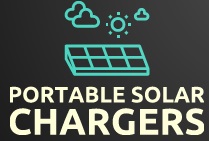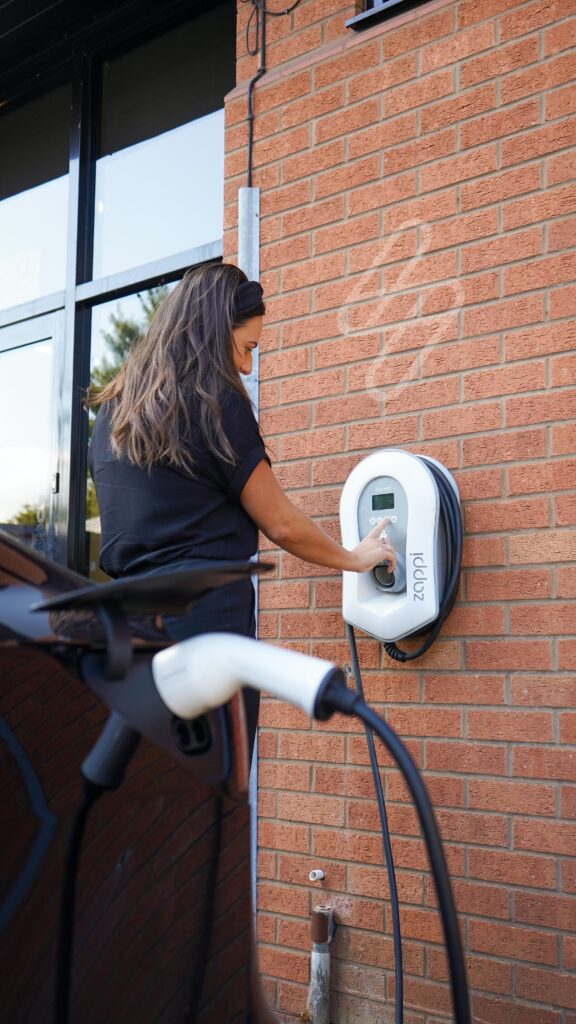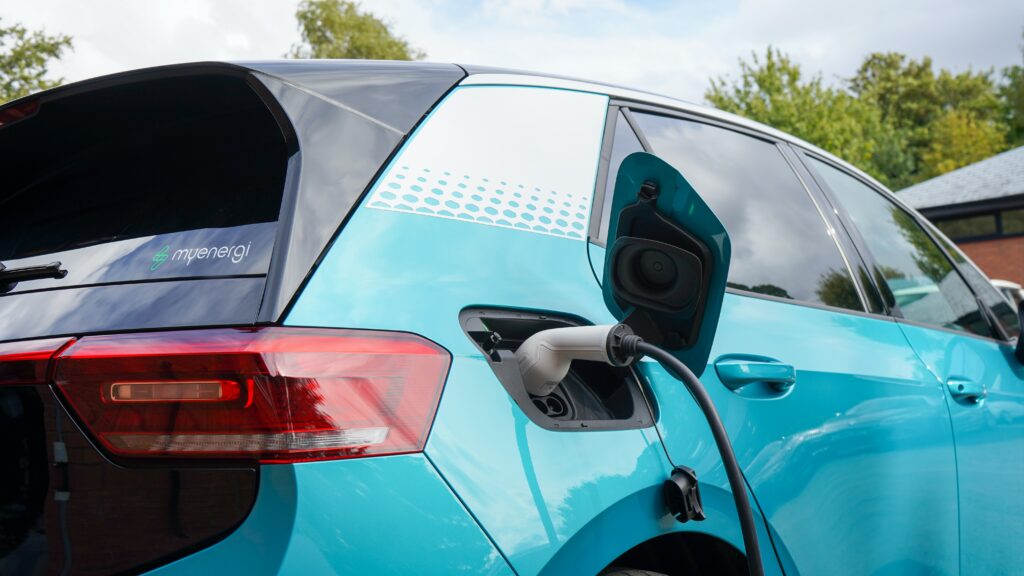Imagine being able to charge your electronic devices anywhere, even in the great outdoors, without having to rely on electricity or batteries. With a portable solar charger, this dream becomes a reality. In this article, you will learn the simple steps to effectively use a portable solar charger, harnessing the power of the sun to keep your devices juiced up and ready to go. Whether you’re camping in the wilderness or simply want to be prepared for power outages, this guide will show you how to make the most of this innovative and environmentally friendly technology. Say goodbye to dead batteries and hello to endless power on the go!
Charging Your Portable Solar Charger
Whether you’re camping in the great outdoors or simply looking for a sustainable way to power your devices, a portable solar charger is a fantastic option. Not only does it harness the power of the sun, but it also offers you the freedom to charge your devices wherever you go. In this article, we will guide you through the process of effectively charging your portable solar charger, as well as using it to charge your devices and utilizing its power bank feature. We will also cover important maintenance tips, troubleshooting common issues, and offer some tips and tricks to optimize your solar charger’s performance. So let’s dive in and get started!
Understanding the Power of the Sun
Before we jump into charging your portable solar charger, it’s important to understand the power of the sun. Solar chargers harness the energy from sunlight and convert it into electricity. The solar panels are made up of photovoltaic cells that generate a direct current (DC) when exposed to sunlight. This DC is then converted to usable alternating current (AC) for charging your devices or stored in the power bank for later use. Keep in mind that the charging efficiency of solar panels can vary depending on factors such as the intensity of sunlight, angle of the panels, and any shadows or obstructions.
Positioning Your Charger for Maximum Sunlight Exposure
To make the most of your portable solar charger, you need to position it to receive maximum sunlight exposure. Place your charger in an area where it can capture direct sunlight for the majority of the day. Ideally, this would be an open space without any obstructions like trees or buildings casting shadows. Adjust the angle of your solar panel to ensure it is facing the sun directly. If your solar charger has adjustable legs or a mounting bracket, take advantage of these features to position it at the optimal angle. Remember, the more sunlight your charger receives, the faster your devices will charge.
Connecting Your Charger to the Solar Panel
Now that you have positioned your portable solar charger in a sunny spot, it’s time to connect it to the solar panel. Most solar chargers come with a built-in cable or connector that plugs directly into the solar panel. Double-check that the connector is securely plugged in, and ensure there are no loose or damaged wires. Once connected, you may notice a charging indicator light on your charger. This light will indicate whether your charger is successfully charging or if there is an issue that needs troubleshooting, which we will cover later in the article.
Charging Your Devices with the Portable Solar Charger
Once your portable solar charger is fully charged, it’s time to put that solar energy to use and charge your devices. Follow these steps to ensure a smooth and efficient charging process.
Checking Compatibility with Your Devices
Before connecting your devices to the portable solar charger, it’s important to ensure compatibility. Most solar chargers come with USB ports or adapters that can charge a wide range of devices such as smartphones, tablets, cameras, and portable speakers. However, it’s always a good idea to double-check the charging requirements of your specific devices. Some devices may require a higher amperage or voltage, which may not be supported by certain solar chargers. Always refer to the user manual or consult the manufacturer’s specifications for compatibility information.
Connecting Your Device to the Charger
Once you have confirmed compatibility, it’s time to connect your device to the portable solar charger. Locate the USB port or adapter on your charger and plug in the charging cable that came with your device. Make sure the connection is secure to avoid any interruptions in the charging process. If you are charging multiple devices simultaneously, ensure that each device is connected properly and securely. Some solar chargers may have multiple USB ports, allowing you to charge multiple devices at once, which can be especially handy when traveling with a group.
Monitoring the Charging Progress
While your devices are charging, it’s essential to monitor the progress to ensure everything is functioning smoothly. Many portable solar chargers come with built-in indicators that display the charging status. These indicators may include a battery level indicator, charging speed indicator, or LED lights that show the strength of the solar power being received. Take note of these indicators and keep an eye on them during the charging process. If you notice any unusual behavior or a lack of progress, it may be an indication that troubleshooting is necessary.
Using the Portable Solar Charger as a Power Bank
In addition to charging your devices directly, many portable solar chargers also come with a power bank feature. This means that they have built-in batteries that can store solar energy for later use. Here’s how you can maximize the power bank functionality of your solar charger.
Understanding the Power Bank Feature
The power bank feature allows you to store excess solar energy in the internal battery of your portable solar charger. This stored energy can then be used to charge your devices even when there is no sunlight available. It essentially acts as a backup power source, providing you with a convenient and sustainable solution for charging on the go. The capacity of the power bank can vary depending on the model and brand of your solar charger, so be sure to check the specifications for the estimated charging capacity.
Charging the Power Bank
To charge the power bank of your portable solar charger, simply connect it to the solar panel and position it in direct sunlight, just as you would when charging your devices. The power bank will automatically start storing solar energy as long as it is connected and exposed to sunlight. Keep in mind that the charging time for the power bank can vary depending on factors such as the intensity of sunlight and the capacity of the power bank. It’s a good idea to check the indicator lights on your charger to monitor the charging progress.
Using the Power Bank to Charge Devices
Once your power bank is fully charged, you can use it to charge your devices even when there is no access to sunlight. Simply connect your device to the USB port or adapter on your solar charger, just as you would when charging directly from the solar panel. The power bank will discharge the stored energy to charge your device. Keep in mind that the total charging capacity of the power bank will depend on the amount of energy stored and the power requirements of your device. It’s always a good idea to keep an eye on the power level indicator of your solar charger to ensure you have enough stored energy before relying solely on the power bank.
Maintaining and Cleaning Your Portable Solar Charger
To ensure the longevity and efficiency of your portable solar charger, it’s important to implement regular maintenance and cleaning. By following these maintenance tips, you can keep your solar charger in top-notch condition for years to come.
Inspecting the Solar Panels Regularly
Regularly inspecting the solar panels of your portable solar charger is crucial for identifying any potential issues or damage. Gently examine the panels for any cracks, scratches, or signs of wear that could affect their performance. Additionally, check the connections and cables for any loose or damaged parts. If you notice any damage, it’s important to contact the manufacturer for guidance on repair or replacement options. Neglecting to address issues promptly can lead to reduced charging efficiency or complete malfunction of your solar charger.
Cleaning the Solar Panels
Over time, dirt, dust, and debris can accumulate on the surface of the solar panels, obstructing sunlight and reducing charging efficiency. To maintain optimal performance, it’s important to clean your solar panels regularly. Begin by removing any loose debris with a soft brush or cloth. Then, using a damp cloth or sponge, gently wipe the surface of the panels to remove any stubborn dirt or grime. Avoid using harsh chemicals or abrasive materials, as they can damage the panels. Finally, dry the panels thoroughly with a clean, lint-free cloth before reconnecting your solar charger.
Storing Your Charger Properly
When not in use, it’s important to store your portable solar charger properly to protect it from damage and prolong its lifespan. Begin by disconnecting the charger from the solar panel and any connected devices. Store the charger in a cool, dry place to prevent any moisture or humidity from affecting its internal components. If your solar charger came with a protective case or bag, use it to provide an extra layer of protection during storage or when transporting it. Taking these simple storage precautions will ensure that your solar charger is ready for use whenever you need it.
Troubleshooting Common Issues with Portable Solar Chargers
Despite their effectiveness and convenience, portable solar chargers may encounter common issues that can hinder their performance. By following these troubleshooting tips, you can quickly identify and resolve any issues you may experience.
No Charging Indicator
If your portable solar charger does not display a charging indicator when connected to the solar panel, there may be a few potential causes. First, ensure that the solar panel is receiving direct sunlight and that there are no obstructions or shadows. If the charging indicator still does not appear, check the connections between the charger and the solar panel. Loose or damaged cables can disrupt the charging process. Finally, if all connections appear to be secure, try resetting your solar charger by disconnecting it from the solar panel, waiting a few minutes, and then reconnecting it.
Slow Charging Speed
If you notice that your devices are charging at a slower speed than expected, it may be due to several factors. Firstly, verify that your solar charger is receiving an adequate amount of sunlight. If the charging conditions are less than optimal, the charging speed may be reduced. Additionally, check the compatibility of your device with the solar charger. Some devices may require higher amperage or voltage to charge quickly, which may not be supported by all solar chargers. Finally, consider the capacity of your solar charger’s power bank. If the power bank is nearly empty, the charging speed may be slower as it discharges stored energy.
Overheating Issues
Overheating can occur when using a portable solar charger for an extended period, especially in high-temperature conditions. When exposed to excessive heat, the internal components of the charger may become damaged or compromised. To avoid overheating, try moving your solar charger to a shaded area or a cooler location. Additionally, ensure that your charger is not covered or obstructed by any material that could prevent proper airflow. If overheating issues persist, it may be necessary to consult the manufacturer or seek professional assistance.
Battery Drainage
If you notice that your portable solar charger’s power bank is losing its charge quickly or is unable to hold a charge, you may be experiencing battery drainage issues. This could occur due to multiple reasons, including leaving the charger in direct sunlight for prolonged periods without any devices connected. One way to prevent battery drainage is to disconnect any devices once they are fully charged and avoid leaving the charger connected to the solar panel when not in use. Additionally, follow the manufacturer’s recommendations for storing and maintaining the power bank to minimize battery drainage.
Optimizing the Performance of Your Portable Solar Charger
To ensure you are getting the most out of your portable solar charger, consider implementing these tips and strategies to optimize its performance.
Choosing the Right Solar Charger for Your Needs
Not all portable solar chargers are created equal, so it’s important to choose the right one for your specific needs. Consider factors such as the charging capacity, size, weight, and additional features when making your selection. If you plan on charging multiple devices simultaneously, opt for a solar charger with multiple USB ports. If portability is a priority, choose a compact and lightweight option. Research different models, read customer reviews, and compare specifications to find the perfect solar charger that suits your requirements.
Maximizing Sunlight Exposure
To make the most of your portable solar charger, find ways to maximize its exposure to sunlight. Set up your charger in an area with ample sunlight and minimal shadows or obstructions. Even small adjustments in the angle or position of the solar panels can make a significant difference in charging efficiency. Additionally, consider using reflective surfaces, such as mirrors or aluminum foil, to direct more sunlight towards the solar panels. These simple strategies can help you capture more solar energy and maximize the charging speed of your devices.
Using Energy-Efficient Devices
To optimize the performance of your portable solar charger, consider using energy-efficient devices whenever possible. Energy-efficient devices consume less power, allowing you to charge them more quickly and efficiently. Look for devices with energy-saving features, such as power-saving mode or efficient charging algorithms. Additionally, avoid using devices that are known to have high power consumption during charging, as they may deplete the solar charger’s power bank quickly. By utilizing energy-efficient devices, you can make the most of the solar energy harnessed by your portable solar charger.
Understanding the Limitations of Portable Solar Chargers
While portable solar chargers offer numerous advantages, it’s essential to be aware of their limitations. Understanding these limitations can help you manage your expectations and make informed decisions when relying on solar power.
Limited Charging Capacity
Due to their compact size, portable solar chargers generally have a limited charging capacity compared to traditional electrical outlets or larger solar panel systems. The charging capacity of a solar charger depends on its size, the efficiency of the solar panels, and the capacity of the power bank. It’s important to consider your charging needs and plan accordingly. If you require a higher charging capacity or plan to charge multiple devices simultaneously, you may need to invest in a more powerful solar charger or a solar panel system with a larger capacity.
Dependence on Sunlight
Portable solar chargers rely on sunlight to generate electricity, making them dependent on favorable weather conditions. Cloudy days, rain, or other forms of low sunlight intensity can significantly impact the charging speed and efficiency. It’s important to have realistic expectations regarding the charging time and the amount of energy generated during less sunny periods. Consider having a backup power source, such as a power bank or spare batteries, if you anticipate prolonged periods of limited sunlight.
Long Charging Time
Compared to traditional charging methods, portable solar chargers generally have a longer charging time. The exact duration can vary based on several factors, including the intensity of sunlight, capacity of the power bank, and power requirements of your devices. Keep in mind that solar charging is a gradual process, and it may take several hours or even a full day to fully charge your devices or power bank. To avoid frustration, plan your charging sessions in advance, and ensure you have enough time for the solar charger to recharge your devices completely.
Tips and Tricks for Using Your Portable Solar Charger
To make the most of your portable solar charger and enhance your overall charging experience, consider implementing these tips and tricks.
Charge during Peak Sunlight Hours
To maximize the efficiency of your portable solar charger, try to charge your devices during peak sunlight hours. Typically, the period around midday when the sun is at its highest point in the sky is when you’ll get the most intense sunlight. By aligning your charging sessions with these peak hours, you can benefit from the maximum charging speed and effectiveness of your solar charger.
Optimize Your Charging Position
Experiment with the positioning and angles of your solar panels to optimize charging efficiency. Try different orientations throughout the day to get the best results. Additionally, consider using a solar panel mounting bracket or adjustable legs if your portable solar charger has these features. These tools allow you to fine-tune the position and angle of your solar panels for maximum sunlight exposure.
Use a Portable Power Meter
Consider investing in a portable power meter to measure the solar energy output and charging speed of your portable solar charger. These devices provide real-time information about the power generated by your solar panels, helping you assess their efficiency. By using a portable power meter, you can objectively evaluate the performance of your solar charger and make any necessary adjustments to enhance its charging capabilities.
Safety Precautions when Using Portable Solar Chargers
While portable solar chargers are generally safe to use, it’s important to follow some safety precautions to prevent any potential hazards or damage.
Avoid Water Exposure
Portable solar chargers are not designed to withstand water exposure. Keep your charger away from water, and avoid using it in rainy or wet conditions. Moisture can damage the internal components and lead to malfunctions or electrical hazards. If you must use your solar charger in a damp environment, ensure it is properly protected from water using a waterproof case or cover.
Do Not Overcharge Devices
Although it may be tempting to leave your devices connected to the solar charger for extended periods, it’s important to avoid overcharging. Overcharging can lead to overheating, reduced battery life, and potential damage to your devices. To prevent overcharging, monitor the charging progress and disconnect your devices once they are fully charged. If you plan to charge your devices overnight or for an extended period, consider using a timer or alarm to remind yourself to disconnect them.
Keep Away from High Temperatures
Portable solar chargers can become hot when exposed to direct sunlight or when charging for an extended period. To prevent overheating or damage, avoid placing your charger near high-temperature sources. Keep it away from direct sunlight when not in use, and choose a shady spot to position it during charging sessions. If your charger becomes excessively hot during use, disconnect it from the solar panel and allow it to cool down before further use.
Exploring Innovative Features of Portable Solar Chargers
In addition to their primary function of charging devices using solar energy, many portable solar chargers offer innovative features that enhance their versatility and usability. Here are a few notable features you may come across when exploring the world of portable solar chargers.
Built-in LED Flashlights
Some portable solar chargers come equipped with built-in LED flashlights, making them a handy tool for outdoor adventures or emergency situations. These flashlights usually have multiple brightness levels and can provide illumination when you need it most. They are a convenient addition to your camping gear or emergency preparedness kit, offering both charging capabilities and a reliable light source.
Wireless Charging Options
Wireless charging is becoming increasingly popular, and some portable solar chargers now offer this option. With wireless charging capabilities, you can simply place your Qi-enabled device on the charger’s surface without the need for any cables or adapters. This feature adds convenience and eliminates the hassle of dealing with tangled cords or misplaced charging cables. Be sure to check the compatibility of your device with the wireless charging feature of your solar charger.
Foldable and Compact Designs
If portability is a top priority, consider opting for a portable solar charger with a foldable or compact design. These chargers are designed to be lightweight and easy to carry, making them ideal for travelers or outdoor enthusiasts. Foldable solar chargers usually consist of multiple panels that can be unfolded and positioned to maximize sunlight exposure. Compact chargers, on the other hand, are designed to be small and easy to slip into a backpack or pocket. The compactness makes them highly portable, while still providing sufficient charging power.
In conclusion, portable solar chargers are an excellent investment for anyone seeking a sustainable and convenient way to charge their devices on the go. By understanding the power of the sun, positioning your charger correctly, and utilizing its power bank feature, you can optimize the charging process and make the most of the solar energy harnessed. Regular maintenance and cleaning, along with troubleshooting common issues and following safety precautions, will ensure the longevity and safety of your solar charger. By implementing tips and tricks, you can enhance the performance and efficiency of your charger, while being aware of its limitations. Lastly, exploring innovative features will offer you additional benefits and make your portable solar charger an invaluable tool for various situations. So go ahead, harness the power of the sun, and enjoy the freedom and sustainability of a portable solar charger!





